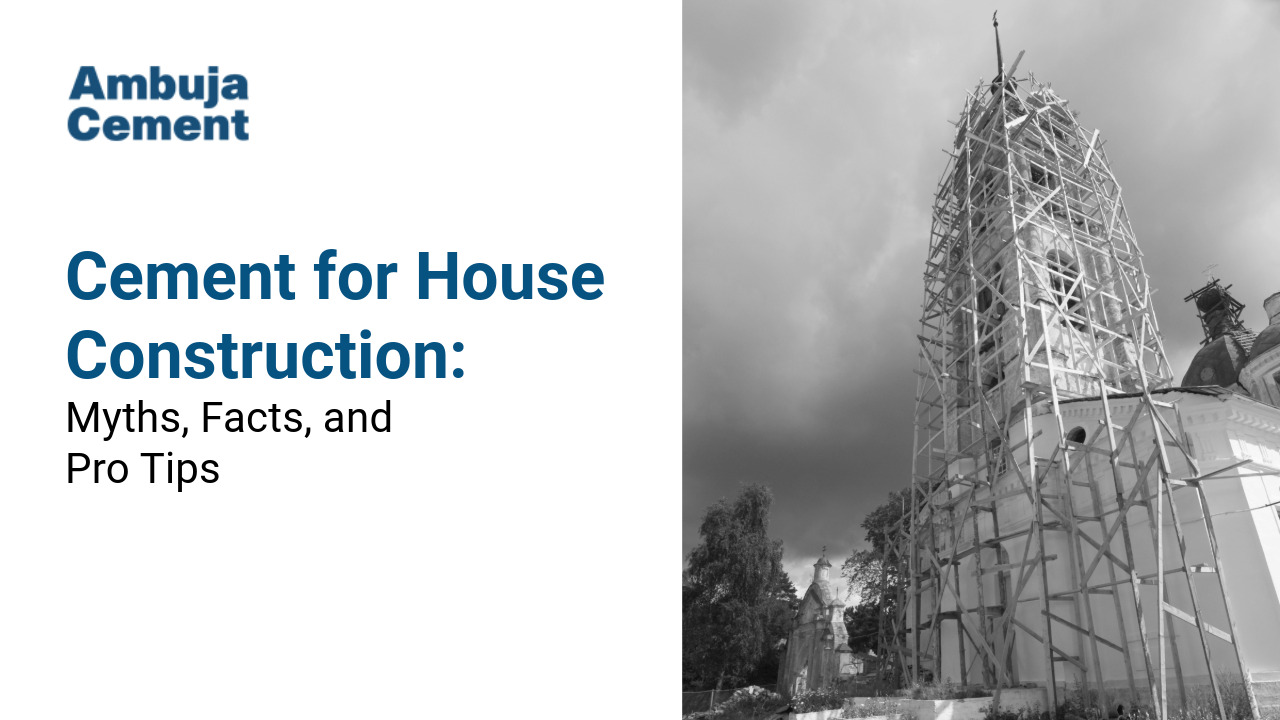So, you’re finally ready to build your home. Exciting, isn’t it? But as you start going into this once-in-a-lifetime journey, there’s one word you’re going to hear over and over again: cement. And for good reason! Cement is a building material that is the backbone of your home. Whether you’re laying the foundation, putting up walls, or plastering interiors, choosing the right house construction cement can make or break the longevity of your structure.
But with so many myths floating around and a market overflowing with choices, how to know what’s real, what’s fluff, and what’s important? Let’s break it all down, bust some myths, and give you solid, reliable tips to help you make smart decisions.
Myth 1: All Cement is the Same
This is one of the biggest misconceptions out there. While cement may look similar to the untrained eye, different types are made for different purposes. Think of it like choosing the right kind of shoe for the right purpose. Cements like the OPC, PPC, PSC, and SRC each serve unique construction needs.
Ordinary Portland Cement (OPC) is strong, fast-setting, and ideal for high-load structures. It comes in three grades: OPC 33, 43, and 53, indicating its compressive strength. For instance, OPC 53 is often used in high-rise buildings or bridges where superior strength is essential.
Portland Pozzolana Cement (PPC), on the other hand, is your go-to for home fixes, plastering, and residential projects requiring a smooth finish and long-term durability. It’s especially great for decorative spieces and sewage pipes, offering excellent resistance in aggressive environments.
Fact: Your Foundation Needs Special Attention
This might sound obvious, but many people still cut corners here.
The truth? A strong, stable home starts from the ground up. Choosing the right cement for the foundation is non-negotiable. OPC 53 or Sulphate Resistant Cement (SRC) is often the preferred choice for areas prone to chemical exposure or where the soil has high sulphate content. These types resist erosion and degradation over time, keeping your structure intact for decades.
Myth 2: Imported Cement is Better
Not true at all. India is the second-largest cement producer in the world, contributing over 8% to the global installed capacity. We’ve got an ample amount of high-quality limestone, a key ingredient in cement, and many Indian brands meet international standards. Plus, using locally sourced cement reduces transportation costs and supports domestic industries.
Fact: Cement Demand is Growing
According to a 2024 report by the India Brand Equity Foundation, India produced around 374.55 million tonnes of cement in FY23, and that number is expected to reach 550 million tonnes by 2025. That growth reflects not just the boom in real estate but also trust in the strength and performance of cement types like OPC and PPC.
Pro Tip #1: Know Your Cement Types
Before you rush off to the local supplier, here’s a quick refresher on commonly used cement types and their best applications:
- OPC 33: Great for general construction like plastering and masonry.
- OPC 43 & 53: Perfect for structural components requiring higher strength.
- PPC: Ideal for home interiors, decorative structures, and sewage systems.
- PSC (Portland Slag Cement): Excellent for marine structures, bridges, and foundations in coastal or industrial areas.
- SRC (Sulphate Resistant Cement): Best for chemically aggressive environments like areas with sulphate-rich soil or water.
Pro Tip #2: Ask the Experts
Don’t just rely on the internet. Speak to your contractor or builder. These professionals have years of hands-on experience and strong ties with trusted cement suppliers. They can help you choose the right cement for construction, tailored to your locality and needs.
Pro Tip #3: Bulk Buying Saves
If you’re building alongside a friend or a neighbour, consider pooling resources to purchase cement in bulk. Bulk buying often means better rates and more consistent quality. It also saves you the hassle of frequent trips to the supplier.
Myth 3: Local Retailers Don’t Stock Premium Brands
On the contrary, many local vendors offer top-tier products. They may even provide flexibility in quantity and negotiate rates if you’re a smart buyer. Building a home is already costly, and saving wherever possible without compromising quality is just smart planning.
Fact: Cement Quality Can Make or Break Your Build
Let’s not forget, cement isn’t just about building today. It’s about standing strong for decades. That’s why using premium-quality foundation cement and for your overall structure ensures long-term safety and durability.
Final Takeaway
Choosing the right cement might not be as exciting as picking out tiles or paint colors, but it’s one of the most important decisions you’ll make. Don’t fall for myths. Instead, focus on facts and seek advice from professionals.
Remember, building a house is a one-time investment. Get it right the first time with the best cement for house construction—because strength, after all, begins at the foundation.

